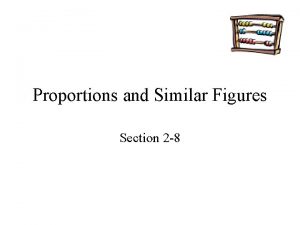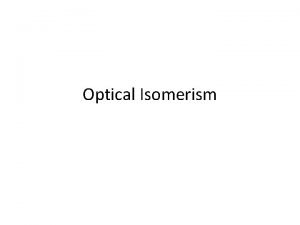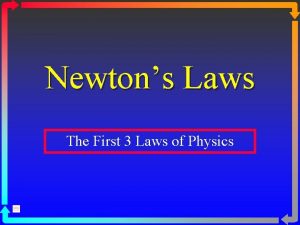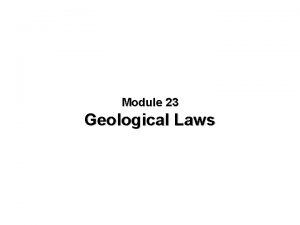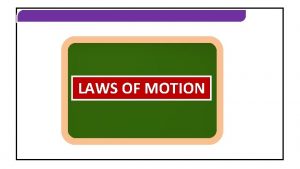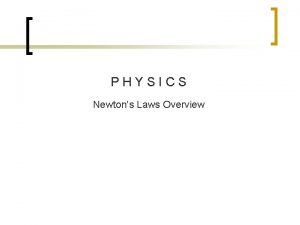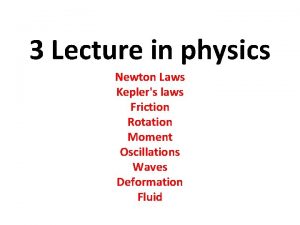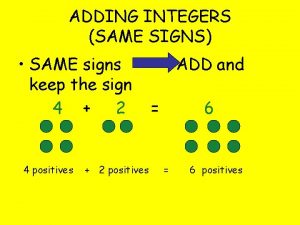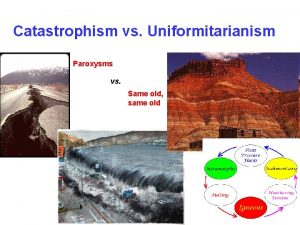The laws of physics are the same in



















- Slides: 19

The laws of physics are the same in any inertial (nonaccelerating) frame of reference Galileo & Einstein would both agree (at terrestrial speeds. ) F=ma is true, regardless of whether you are on a train, or stationary. x’ = x - v. F t, take two derivatives. The speed of light is independent of the speed of the observer or source. Galileo would say that this is impossible. If you are on a train and throw a ball forward with speed v, then on the ground the ball moves with speed v + vtrain. It’s crazy to suggest that it could move at speed v when measured by me, relative to the train, and also by you, when measured relative to the ground. It may be crazy, but it is true, if the ball is moving at speed c. This is an experimental result, repeated tens of thousands of times.

Note: If by “laws of physics” you mean to include Maxwell’s equations, then postulate 2 is automatically included, since M. E. s predict the speed of light. (Of course, Galileo (d. 1642) was woefully unfamiliar with Maxwell. (b. 1831)

A reference frame is a coordinate system, plus synchronized clocks located at all points in space. An inertial frame is one that is not accelerating.

A reference frame is a coordinate system, plus synchronized clocks located at all points in space. An inertial frame is one that is not accelerating. Acceleration gives “fictitious forces” in the frame. Which of the following is not a fictitious force? Choose any correct answer. A] centrifugal force B] coriolis force C] gravity D] electric force

In an inertial frame, no force still means no acceleration.

Spacetime diagrams & Worldlines What is the worldline of a particle that is accelerating (+ direction)? B Which worldline is (that of a stationary particle in) an inertial reference frame? A

A train is moving at constant speed. It is shown as the primed frame; the earth is unprimed. Times are in seconds, distances in meters. How fast is the train moving, in m/s? A] 0. 2 B] 0. 5 C] 1 D] 2 E] 5

A little boy throws a ball on the train. The world line of the ball is shown. How fast does the ball move with respect to the earth (in m/s)? A] 0. 2 B] 0. 5 C] 1 D] 2 E] 5 ball

A little boy throws a ball on the train. The world line of the ball is shown. How fast does the ball move with respect to the train (in m/s)? A] 0. 2 B] 0. 6 C] 1. 5 D] 2 E] 5 ball

t=t’ These are vector equations, though this example is 1 D ball

An “event” is something that happens at a point in space and at an instant in time. For example, the child throwing the ball can be thought of as an event. The ball hitting the conductor is another event. e 2 ball e 1

Invariant - a quantity that is the same for all inertial observers. In Galilean relativity, what is invariant? Choose any correct answer. A] the distance between two events B] the time between two events C] the kinetic energy transferred in a collision D] the mass of a particle

Spacetime diagrams : revisited. What is the x-axis? It is the set of all events that happen at t=0. These are simultaneous. Any line parallel to the x-axis represents the set of all events happening at time t.



Consider a long spaceship moving in the +x direction. When the middle of the spaceship is at the origin, a light flashes. When does the flash reach the back and the front of the ship? c c WRONG X’

The speed of light is independent of the speed of the observer. So, according to the spaceman, the light reaches the front and the back of his ship at the same time. c c Right A and B are simultaneous to the spaceman. Thus, the line AB is parallel to the x’ axis!

Events that are simultaneous to one observer are NOT to a different observer. c c Right A and B are simultaneous to the spaceman. Thus, the line AB is parallel to the x’ axis!

Note well: you do NOT “drop a perpendicular” to find a coordinate value.
 Mikael ferm
Mikael ferm Charles de secondat
Charles de secondat Similarity statement
Similarity statement The same area at the same time
The same area at the same time Cis trans vs e z
Cis trans vs e z Same place same passion
Same place same passion Similar figures have the same but not necessarily the same
Similar figures have the same but not necessarily the same ßwe
ßwe All 3 newtons laws
All 3 newtons laws Why does it happen
Why does it happen University physics with modern physics fifteenth edition
University physics with modern physics fifteenth edition Physics ia exemplars
Physics ia exemplars Sơ đồ cơ thể người
Sơ đồ cơ thể người Tư thế ngồi viết
Tư thế ngồi viết Hát kết hợp bộ gõ cơ thể
Hát kết hợp bộ gõ cơ thể đặc điểm cơ thể của người tối cổ
đặc điểm cơ thể của người tối cổ Cách giải mật thư tọa độ
Cách giải mật thư tọa độ Tư thế worms-breton
Tư thế worms-breton ưu thế lai là gì
ưu thế lai là gì Thẻ vin
Thẻ vin


